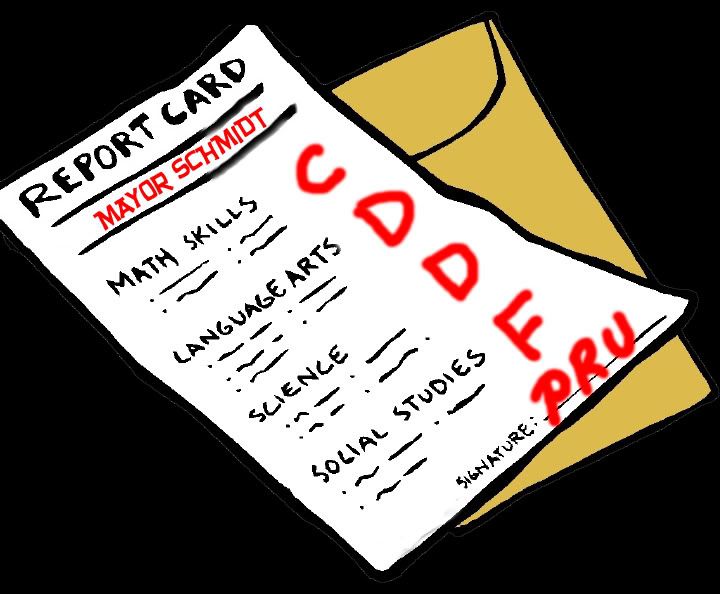
By -- DragonArtz Designs
In a May 10, 2010 online article by the Herald-Advocate,Scores vs. salaries: Survey shows pay outpacing performance, we read --
A study published last month in the Sun-Times showed that some Illinois school districts pay their teachers well but receive mediocre test scores in return. Districts that serve Niles and Park Ridge rank high in both salaries and test scores, with the expenditures sometimes outranking performance.
In each of three districts in the area, test scores trailed to varying degrees behind salaries. Maine High School District 207's salaries ranked eighth out of 483, with an average of $89,356, and its Prairie State Achievement Exam test scores ranked 102nd, with an average of 68.6. Park Ridge-Niles School District 64's salaries ranked 35th out of 769 with an average of $66,323.04, and its Illinois Standards Achievement Test scores ranked 55th with an average of 93.1.
The reporting seems straight-forward and simple enough. So what's the explanation for the discrepancy and apparent lack of teachers' salaries being tied to and based upon performance measures?
Oh. Now we get it -- the straight-foward approach lacks "sophisticated statistical inferences." The PRU Crew is wondering if that's the school district equivalent of "the fulcrum of the genesis" where the school district is a "synergistic center" of learning?District 207 Superintendent Ken Wallace said the simplicity of an approach like the one the Sun-Times took can make its conclusions misleading.
"Part of the problem with some studies is that they make broad generalizations without doing sophisticated statistical inferences to make sense of what all that data means," he said. "We've got rigorous studies showing that among the top high school districts in Illinois we are getting better performance out of our students than many."One study shows that we are second among all districts when you factor in whether students are low-income and how many of their parents went to college."
The PRU Crew sure would like to get a look at those "rigorous studies."
Superintendant Wallace goes on to say --
Wallace pointed out that while some schools in the northern suburbs of Chicago are relatively homogeneous, Maine East High School educates students who speak about 60 different languages in their homes.Oh. Now we get it -- some kids no speaka da Engrish. Dang furinears!
The PRU Crew did wonder if those "60 different languages" spoken in the homes of those students is to be construed as meaning those students aren't speaking Engrish at school and what percentage of the district's student body isn't speaking Engrish at school. But we're probably lacking "sophisticated...inferences" somewhere in our thinking.
And if anyone ever doubted the old mantra of location, location, location --
District 207 administrators said their high rank in salaries is partly due to location, and partly to timing. Wallace said the district's salaries are competitive with those of other school districts in the northern suburban region.Oh. Now we get it -- being competitive with other school districts in the northern suburban region is fine and dandy, as long as the issue is teacher salaries. But whatever you do, don't even think about comparing salary levels in conjunction with other school districts academic performance. And anyone who suggests consideration of any direct connection between the two is just not very sophisticated!
Assistant Superintendent for Business Mary Kalou said the high salaries were agreed upon at a collective-bargaining agreement in 2007, before the current recession began.
The article concludes --
"This contract is similar to bargains we have settled in the past. The biggest difference is the downturn in the economy that occurred. Salaries negotiated after the downturn look very different," she said. "When ours expires in 2012, we will look at salaries, and, given the economic situation, where we should go."Got it. Market forces within and without of the educational arena will be looked at, but there won't be any consideration given to any comparison of district test scores as a measure of teacher performance, which may merit the salaries the union can be expected to demand.







